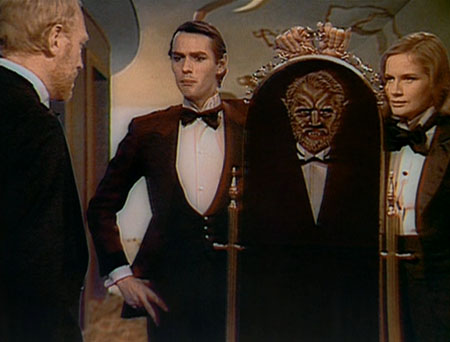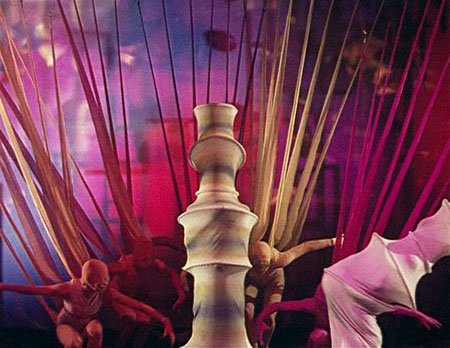“I CAN SEE YOU is a film about the thing that frightens me the most… my own mind… we as sentient human beings are completely at the mercy of an organ that we may never fully understand; an organ that, at the slightest malfunction, can throw our perception of reality into such chaos and confusion that we will never see or experience the world the same way again.”–Graham Reznick, from the Director’s Statement for I Can See You
DIRECTED BY: Graham Reznick
FEATURING: Ben Dickinson, Larry Fessenden, Duncan Skiles
PLOT: Ben is a nearsighted, neurotic and painfully shy photographer/artist working for an advertising start-up firm looking to land a huge contract for the ClarActix corporation. The three twenty-something admen organize a camping trip to snap nature photos that can be used in the campaign. At a campfire hootenanny, Ben meets a beautiful hippie girl he once had a crush on, and his awkward attempts to romance the free-spirited girl lead him to an internal breakdown that manifests itself in a series of unnerving surrealistic montages.

BACKGROUND:
- Director Graham Reznick accumulated over a dozen credits on low-budget films in the sound department before helming I Can See You, his first feature film.
- I Can See You is the fifth in the “Scarefilx” series executive produced by Larry Fessenden (who also appears in the movie as the ClarActix spokesman). According to its press release, the Scareflix series is “designed to exploit hungry new talent and inspire resourceful filmmakers to produce quality work through seat-of-the-pants ingenuity.”
- Actors Ben Dickson, Christopher Ford and Duncan Styles, who play the members of the three man advertising firm in the film, are part of Waverly Films, a YouTube based comedy troupe that makes ad parodies, among other sketches.
- Composer Jeff Grace was an assistant to Howard Shore on The Lord of the Rings films.
INDELIBLE IMAGE: Relying as it does on the montage style for its unsettling effect, I Can See You is filled with memorable imagery. The briefly seen double-image of Ben is sublimely creepy, so much so that a variation of it was used for the original movie poster (unhappily abandoned in favor of a forgettable still of Ben shaving for the DVD release). It’s Ben’s unfinished, faceless portrait of his father, however, which recurs several times in different contexts, that is the film’s most important visual symbol. If you stare at the painting long enough you can make out tiny indications of eyes and a mouth, which makes the picture even more uncanny than pure blank flesh would be.
WHAT MAKES IT WEIRD: I Can See You is one of the trippiest, druggiest movies to come
Official trailer for I Can See You
down the pike since the psychedelic Sixties; the last sequence plays like a twenty-minute, long-take hallucination shot on location inside Ben’s splintered mind.
COMMENTS: I Can See You‘s strategy is to slowly build up a storehouse of images, then Continue reading 41. I CAN SEE YOU (2008)



